As pet owners, our homes are not just for us—they’re shared spaces where our furry friends live, play, and relax. However, creating a pet-friendly home doesn’t mean you have to compromise on style. With thoughtful design choices, you can create a space that is both beautiful and functional, catering to the needs of your pets while maintaining the aesthetic you love. Whether you’re planning a renovation or simply looking to make your home more accommodating for your four-legged companions, designing with your pets in mind can enhance the comfort and harmony of your living space for everyone involved.
Here are tips for Designing for our Furry Friends
TIP #1 DESIGNING FOR FURRY FRIENDS: UNDERSTAND THE NEEDS OF YOUR PET
When designing a pet-friendly home, it’s essential to start by understanding the specific needs of your pets. Different animals have different requirements based on their species, size, breed, and behavior. For instance, dogs may need durable flooring that can withstand heavy foot traffic and claws, while cats may benefit from vertical spaces like cat trees or shelves to satisfy their climbing instincts. Safety is also paramount—identifying potential hazards such as toxic plants, sharp furniture edges, or small objects that could be swallowed is crucial in creating a secure environment. By tailoring your design choices to the unique needs of your pets, you ensure that your home is not only stylish but also a safe and comfortable haven for them.
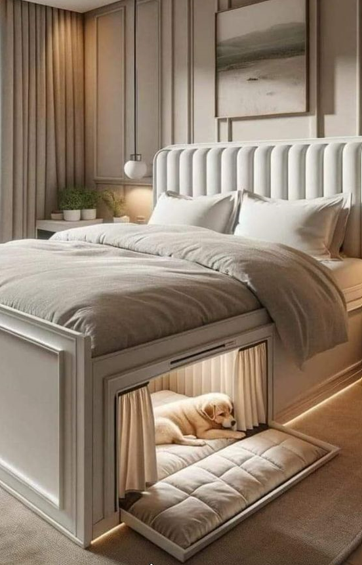
TIP #2 DESIGNING FOR FURRY FRIENDS: CHOOSING PET-FRIENDLY MATERIALS
Selecting the right materials is key to creating a pet-friendly home that can withstand the wear and tear of daily life with animals. Flooring is one of the most important considerations—opt for materials like tile, hardwood, or laminate, which are durable, scratch-resistant, and easy to clean. If you prefer carpets or rugs, choose those that are stain-resistant and easy to maintain. When it comes to furniture, materials like leather or microfiber are great choices for upholstery, as they are less likely to trap fur and can withstand scratches. Additionally, choosing fabrics with patterns can help disguise any pet-related stains or damage. By selecting pet-friendly materials, you can maintain the beauty and longevity of your interiors while ensuring they are practical for your furry friends.
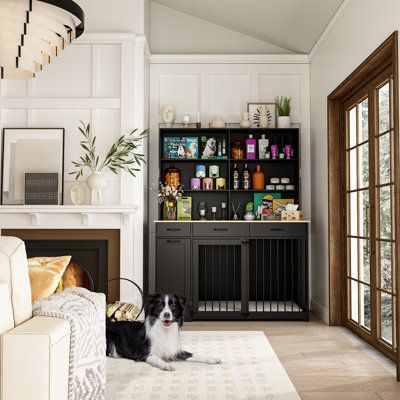
TIP #3 DESIGNING FOR FURRY FRIENDS: CREATE PET-FRIENDLY ZONES
Designing specific zones in your home for your pets can make a significant difference in their comfort and your overall home organization. Consider dedicating a cozy corner of the living room for a pet bed or creating a designated feeding station in the kitchen. Built-in features like a custom nook for a litter box or a discreet cabinet for pet supplies can seamlessly integrate pet necessities into your home’s design. For those with outdoor space, designing a secure yard with pet-friendly landscaping, or even a “catio” for indoor cats, allows your pets to enjoy the outdoors safely. By thoughtfully planning these pet-friendly zones, you create a harmonious environment where both pets and humans can coexist happily.
TIP #4 DESIGNING FOR FURRY FRIENDS: INTEGRATE STYLE WITH FUNCTIONALITY
A pet-friendly home doesn’t mean sacrificing style—in fact, you can blend pet functionality with your home’s aesthetic for a cohesive look. Start by choosing pet accessories, such as beds, bowls, and toys, that complement your décor rather than clash with it. There are many stylish options available that can enhance your design rather than detract from it. Consider furniture that doubles as storage for pet supplies or custom-built pieces that incorporate features like a hidden litter box or a feeding station. By integrating pet needs into your design thoughtfully, you can create a space that is both beautiful and practical, ensuring that your home reflects your style while accommodating your pets.

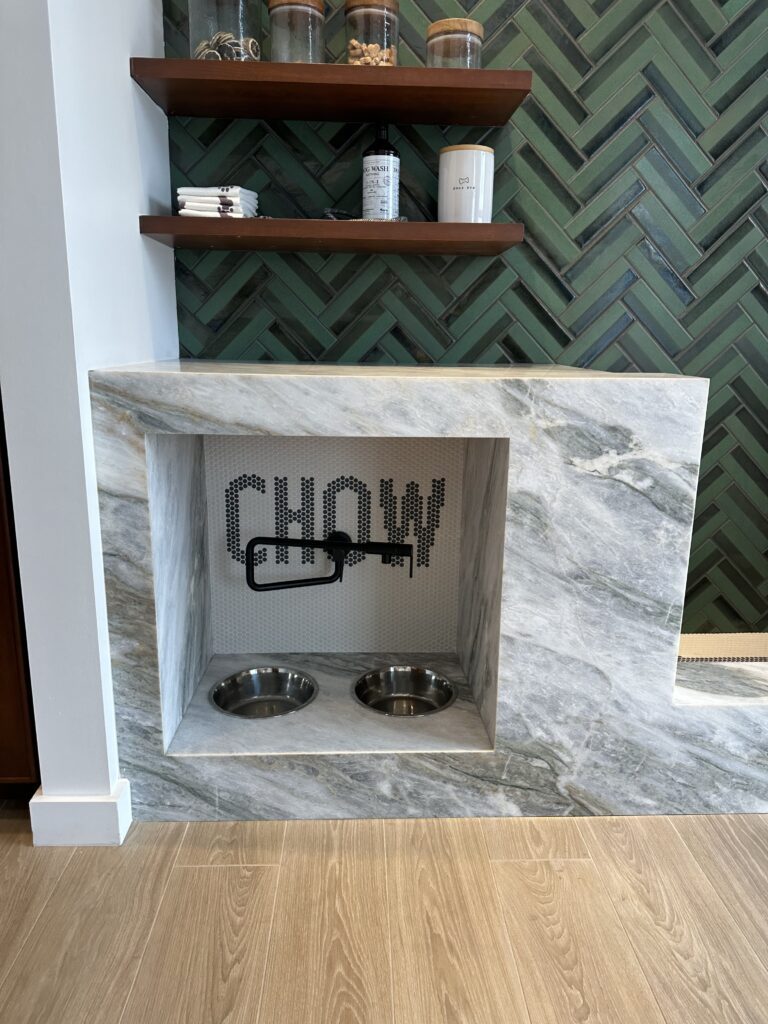
TIP #5 DESIGNING FOR FURRY FRIENDS: KEEPING THE HOME CLEAN & FRESH
Maintaining a clean and fresh home can be challenging with pets, but it’s entirely possible with the right strategies. Regular grooming is the first step in managing pet hair and dander, reducing the amount that ends up on your floors and furniture. Invest in quality cleaning tools, like vacuums designed for pet hair, and consider using air purifiers to keep the air fresh and reduce allergens. For combating pet odors, natural remedies like baking soda or pet-safe air fresheners can be effective. Establishing a regular cleaning routine helps keep pet-friendly materials and surfaces in good condition, ensuring that your home remains a welcoming space for both you and your furry companions.
Designing a pet-friendly home requires careful consideration, but the result is a space that is both functional and stylish, where both pets and their owners can thrive. By understanding your pets’ needs, choosing the right materials, creating dedicated pet zones, and integrating pet essentials with your décor, you can achieve a harmonious balance between practicality and aesthetic appeal. Keeping your home clean and fresh further enhances the living experience for everyone. Ultimately, a well-designed pet-friendly home isn’t just about accommodating your furry friends—it’s about creating a space that everyone, human and animal alike, can enjoy to the fullest.
Let us know in the comments, what is your challenge when designing for your Furry Friend? We’d love to help you!

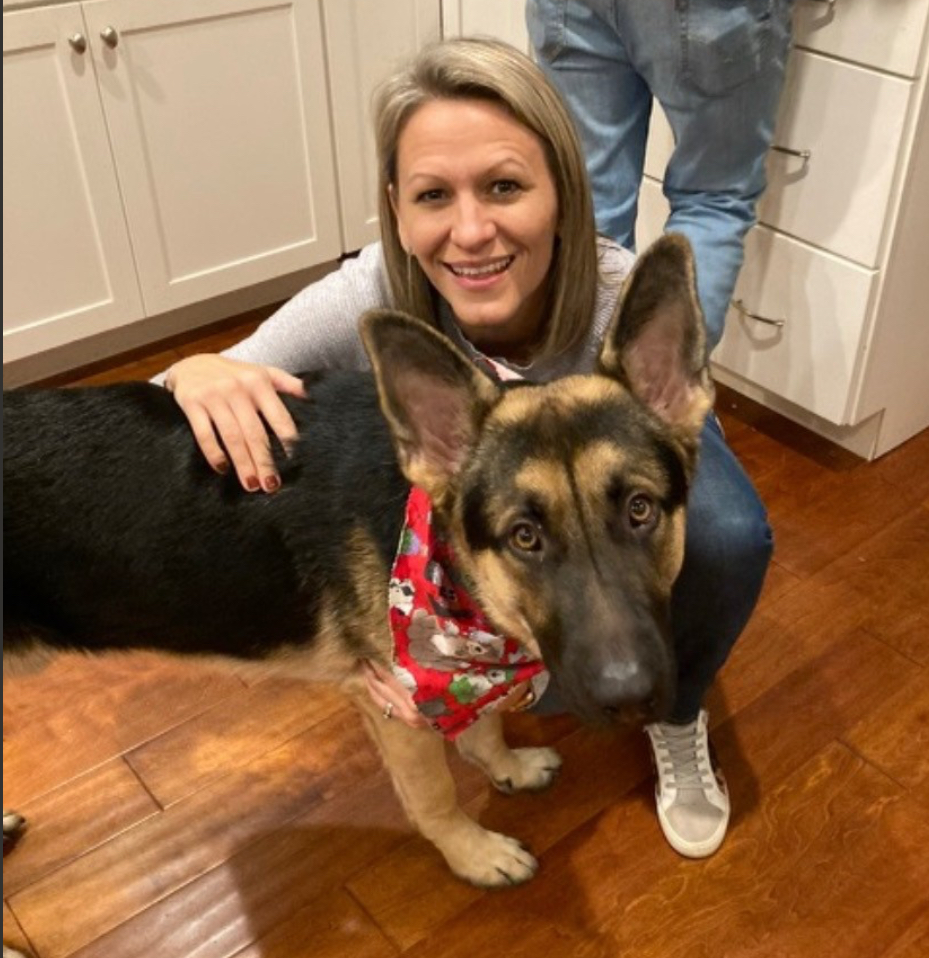
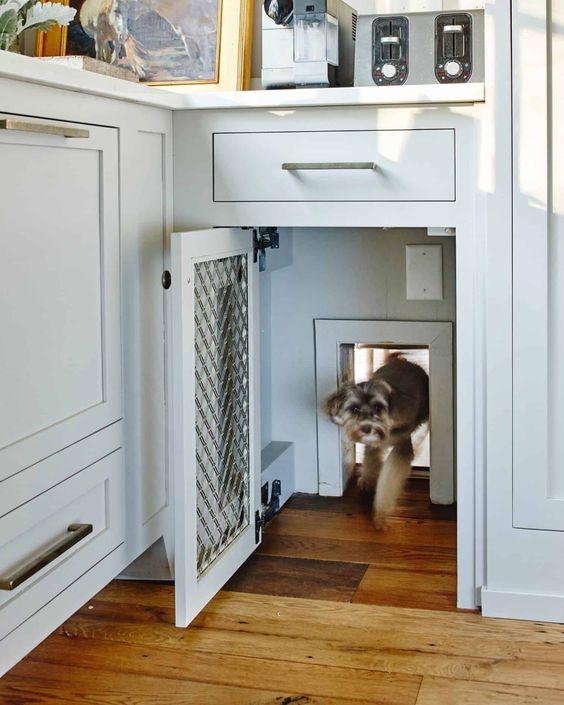



Be the first to comment